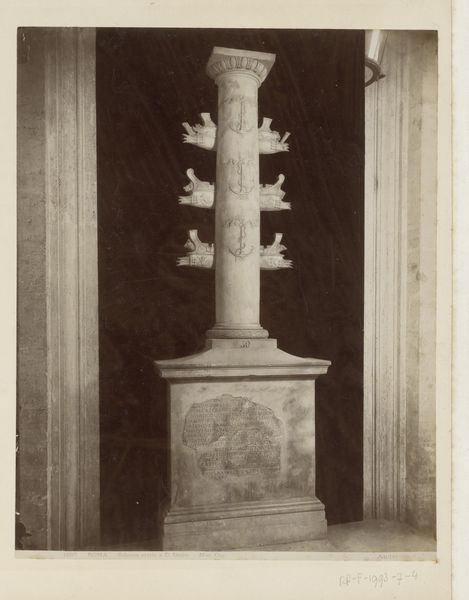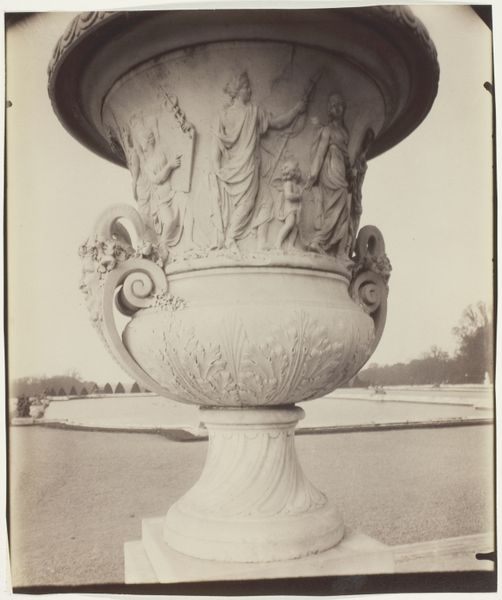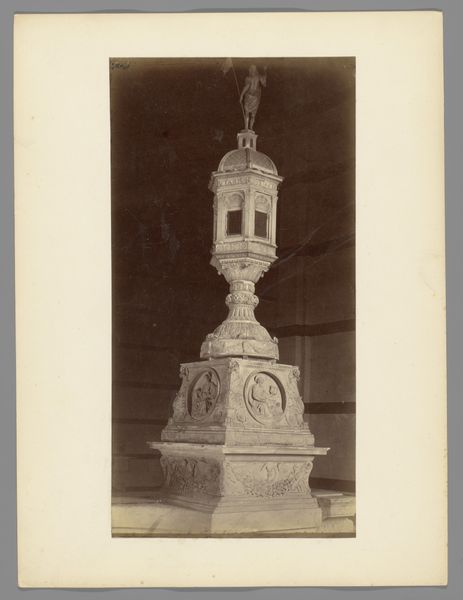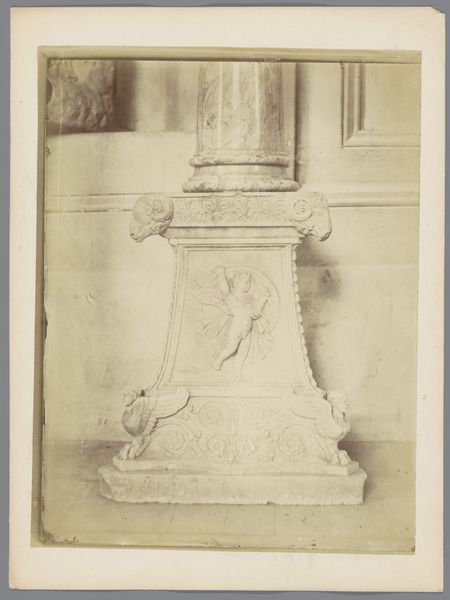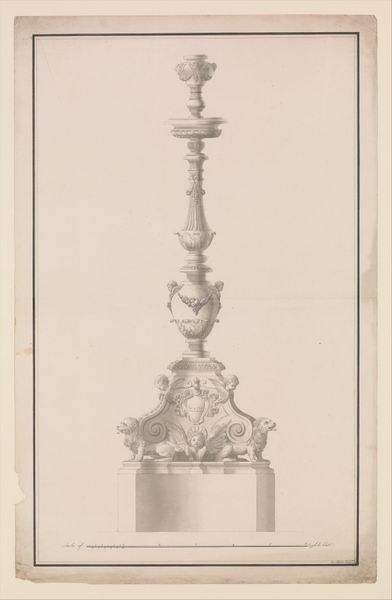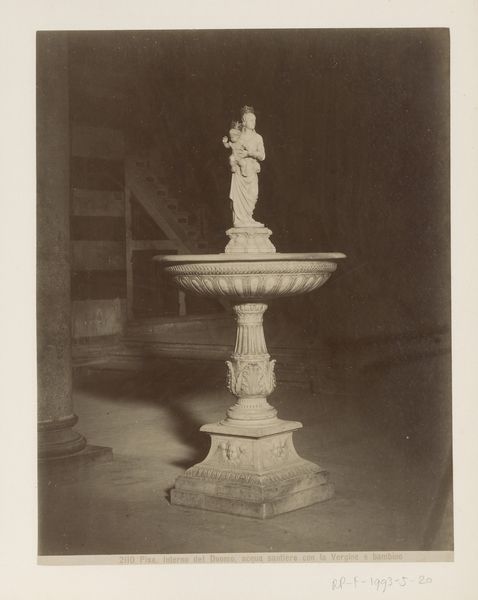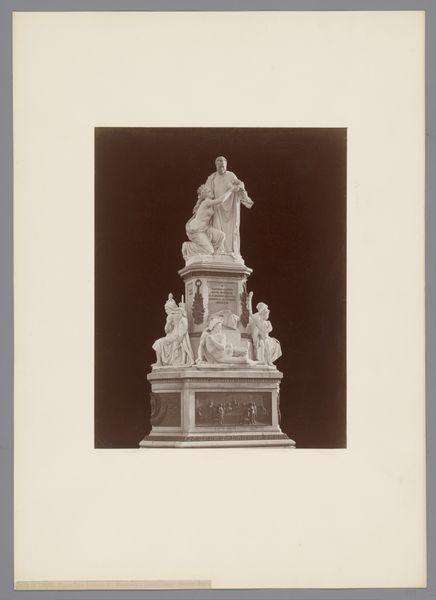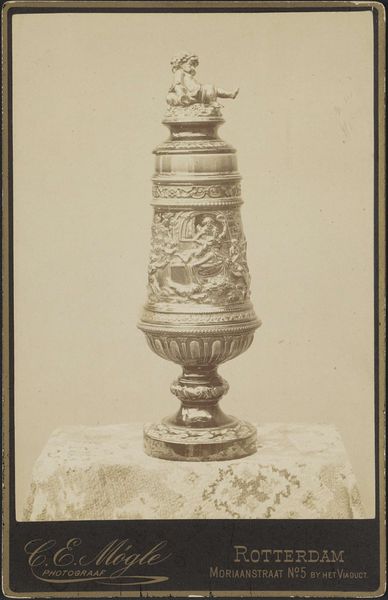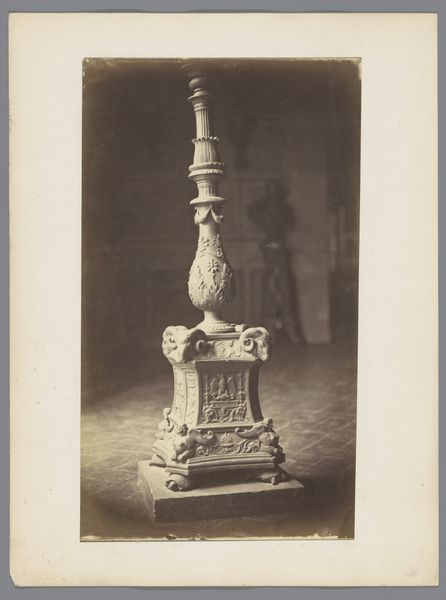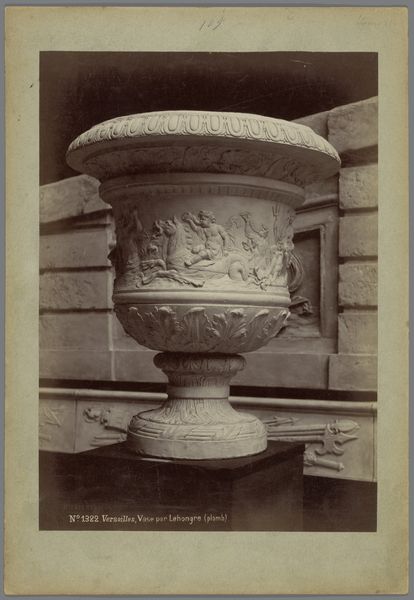
Marmeren kandelaar, bekend als de Barberini-kandelaber, Vaticaan c. 1857 - 1875
0:00
0:00
photography, sculpture, marble
#
portrait
#
sculpture
#
figuration
#
photography
#
classicism
#
ancient-mediterranean
#
sculpture
#
marble
Dimensions: height 260 mm, width 206 mm
Copyright: Rijks Museum: Open Domain
Curator: Here we have a photographic print entitled “Marmeren kandelaar, bekend als de Barberini-kandelaber, Vaticaan" or “Marble candelabra, known as the Barberini candelabra, Vatican,” by James Anderson. This piece dates to approximately 1857-1875. Editor: It’s remarkably ornate, even in monochrome. The composition is strongly vertical, guiding the eye upwards through its tiered elements, and the contrast gives it a stark, almost ghostly presence. Curator: Absolutely. The subject, an actual marble candelabra, embodies the height of classicism, reflecting the values of ancient Rome with its decorative motifs and overall structure. Note the figure in the bas-relief on the base. Editor: I see that, an almost cheeky figuration adds a narrative element to the object. There’s a tension here. The photograph, taken well into the 19th century, depicts an object from antiquity; consider Anderson’s perspective and his choice of framing. Does it offer an ode to a lost empire, or a critique of contemporary values? Curator: Perhaps it reflects a 19th-century preoccupation with rediscovering and documenting the past. The choice to photograph the candelabra removes the utility, thus allowing its inherent aesthetic qualities to become its primary focus, to create an image ripe for contemplation. Consider its likely placement, perhaps gracing a Roman palazzo and illuminating social inequalities through overt display of wealth. Editor: The details are incredible—the layering, the acanthus leaves, the fluting. The play of light and shadow across the marble surface reveals its texture, imbuing a sculptural object with a painterly sensibility that brings the work into dialogue with works beyond its temporality. It’s more than just a document; it’s an exercise in pure form and the aesthetics of presentation. Curator: It speaks to the lasting influence of antiquity. By positioning it in our contemporary collection at the Rijksmuseum, we're continuing this centuries-long conversation, revealing its relevance within both past and present contexts, which continues to stimulate conversation across all spheres of study and interest. Editor: It has a kind of severe beauty; it really demands close and careful seeing. The photographic print asks us to look—really look—at something so embedded with layers of artifice and historical context, even within a flattened field of depth.
Comments
No comments
Be the first to comment and join the conversation on the ultimate creative platform.
